Contents
Strawberries or garden strawberries – a berry loved by many, not only tasty, but also healthy. They grow it in almost any garden plot, only the harvest from different gardeners can vary greatly. It is very frustrating when the efforts spent do not give the expected result.
Strawberries can grow in one place for a long time, but over time, the bushes grow old, the crop falls, the berries become smaller. This usually happens after 3-4 years. Therefore, it’s time to update the old plantation. The seed propagation method is suitable only for small-fruited strawberries. Large-fruited varieties do not inherit parental traits when sowing seeds. Therefore, a large-fruited berry is propagated only by daughter rosettes or mustaches. The future harvest directly depends on their quality. Therefore, sockets not only need to be chosen correctly, but also strawberry plants must be prepared in advance so that they are of high quality.
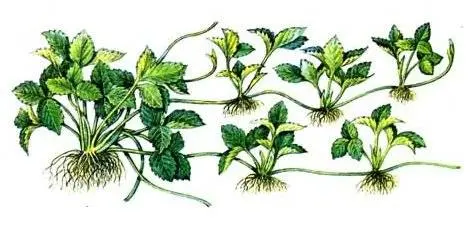
How to select a mustache for planting
Mustache selection should be started a year before the renewal of the strawberry plantation. The strongest and most productive mustaches give bushes of the second year of life. They must have many horns. During fruiting, from the bushes of the first year of life, select strawberries with the largest and most numerous berries. Mark these bushes, for example, with pegs. Next year, you can take daughter sockets from them to plant strawberries in autumn with a mustache.
Since the strength of strawberry plants is not unlimited, it will be difficult for them to give good daughter rosettes and a full-fledged harvest at the same time. Therefore, all flower stalks in the year of mustache selection must be removed from them. Now the plant will throw its forces into the formation of child outlets, so that strawberries can be planted in autumn with a mustache.
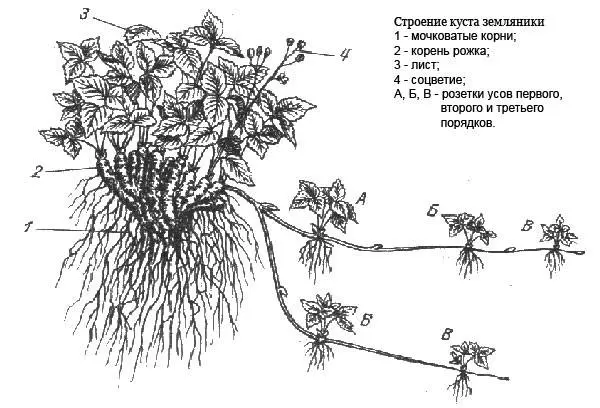
After their formation, pinch the mustache.
The number of whiskers that one bush can form depends on its development. In the strongest bushes, it can reach thirty with 3-5 daughter outlets.
In practice, it is not recommended to leave more than five mustaches on one plant.
The strongest mustache is July. By the time of planting, they manage not only to take root well, but also to grow a rosette with a considerable number of leaves. Such plants take root well and do not give attacks.

Criteria for selecting child sockets for planting
They must:
- have a well-developed root system with a root length of at least 7 cm and a large number of white suction roots;
- the diameter of the root neck should not be less than 6 mm;
- have at least four developed leaves.
Planting dates for child outlets
You can plant strawberries in several terms. The most common practice is spring planting. You can plant it in the second half of July. But if it was not possible to set up a new strawberry plantation within these terms, it is quite possible to do this in the fall.
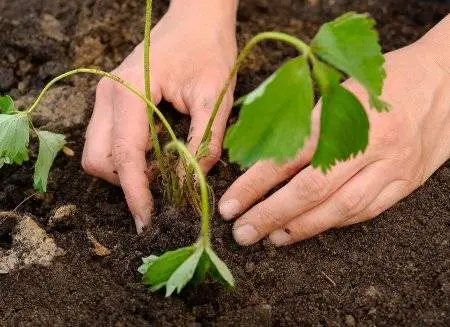
In order for the plants to be comfortable in the garden and they could use all their strength to form a crop, and not to survive, it is necessary not only to plant the plants correctly, but also to skillfully prepare the soil, choose a site suitable for their requirements.
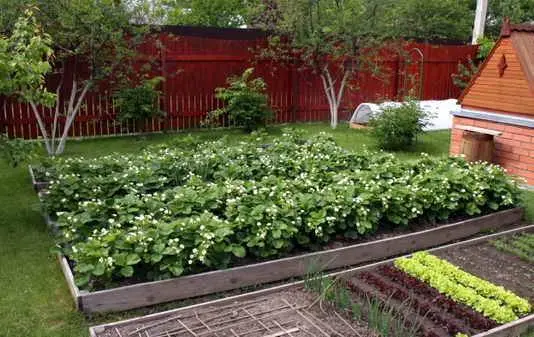
Site Selection
Carrots, celery, spinach, dill, garlic, radish and radish can be the best predecessors for this delicious berry. You can not plant this berry after plants of the nightshade family, and even more so after strawberries or strawberries. Solanaceae and strawberries have common diseases. Bad predecessors and legumes. They are intermediate hosts of a pest dangerous for strawberries – nematodes.
The site should be chosen sunny, with sandy or loamy slightly acidic soil. If the soil is not suitable, you need to improve it. To do this, sand is added to clay soil, and clay is added to sandy soil. The acidity of the soil is also very important. Strawberries grow best and produce high yields in slightly acidic soil. If the acidity of the soil does not meet these requirements, it must be corrected. Too acidic soil is lime, and slightly alkaline soil is acidified.
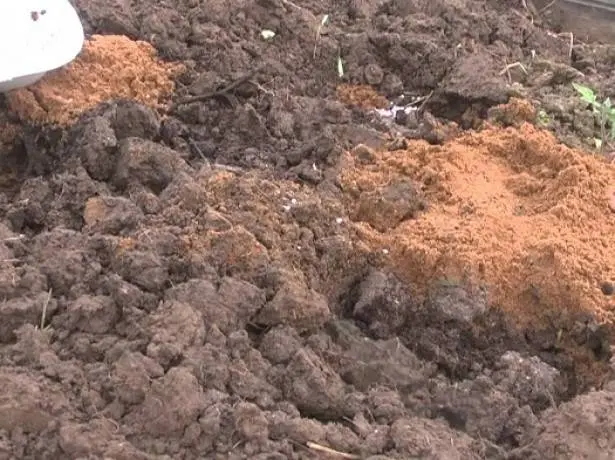
Soil preparation
To plant strawberries in the fall, the ground must be prepared in the spring. The future bed needs to be dug up, the roots of perennial weeds are chosen very carefully. Strawberries will grow in the garden for more than one year, so soil fertility must be taken care of in advance. When digging, you should add a bucket of rotted manure or humus, 30 g of double superphosphate and 50 g of complete mineral fertilizer with trace elements, half a glass of ash.

So that the land is not overgrown with weeds until autumn, it is necessary to sow it with green manure, for example, mustard and annual lupine. They not only enrich the soil with nutrients, but also disinfect it. They are mowed at the beginning of flowering and slightly embedded in the soil.
With the onset of cool and rainy September days, we plant a mustache on a prepared garden bed. How to plant strawberries with a mustache so that the plants do not experience stress and quickly take root in a new place?
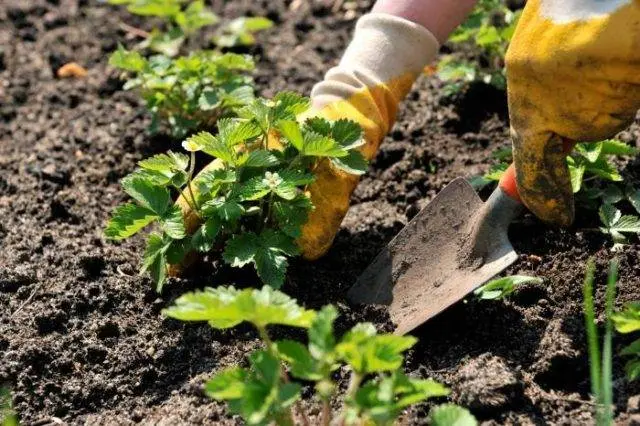
Landing sockets
First you need to decide on the landing method. It can be single or double row. In the latter case, the distance between rows should be about 60 cm. The distance between the bushes depends on the variety. For powerful and productive plants, it can reach 60 cm. But for most varieties it can be 30 cm.
How to plant strawberries? Landing technology is quite simple. Dig holes at the chosen distance. Their depth should correspond to the length of the roots. Each well should be well shed with non-cold water. It will require at least 1 liter. We cut off the mustache connecting the child outlet to the mother plant. Before planting, strawberry bushes should be watered so that the earth lump is better preserved. This is especially important if the weather is dry. With the help of a scoop, carefully remove the socket from the ground, trying not to shake it off the roots. We lower the plants into the hole and straighten the roots well.

It is very important that the root neck of the planted plant is not buried in the ground, and the roots are not exposed. The root neck should be strictly at the level of the soil.
After planting, the soil around the bushes is well mulched. As a mulch, rotted sawdust, hay or pine or spruce needles are suitable.
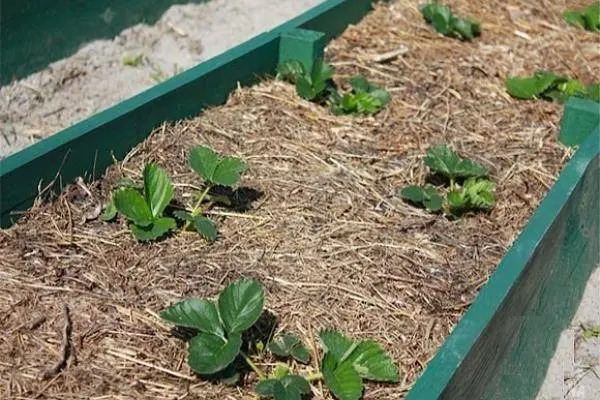
Black non-woven fabric can also be used as mulch. Then the socket landing technology will be a little different. A non-woven material is spread on the prepared bed, fixing it around the edges. In place of future holes, cross-shaped incisions are made and the edges of the tissue are folded back. Dig holes in which you need to plant child sockets. Landing in this way has many advantages:
- no need to fight weeds;
- the earth will be loose;
- moisture is retained longer, which means that you will have to water less often;
- the thermal regime in the root zone will be more comfortable for plants;
- the berries will not get dirty, and the strawberries themselves will hurt less.
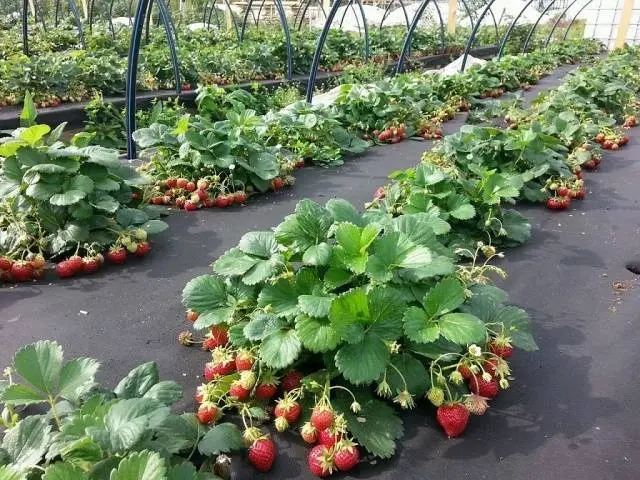
It is best to cover the beds with white non-woven material. So, the seedlings will take root better.
Further care for the planted bushes consists in watering and protection from possible frosts.
Don’t let the strawberry plantation grow old. Update it with child outlets in time so that the harvest always pleases.









